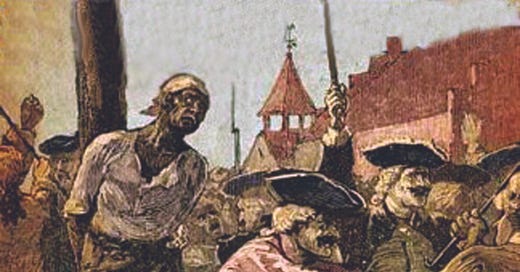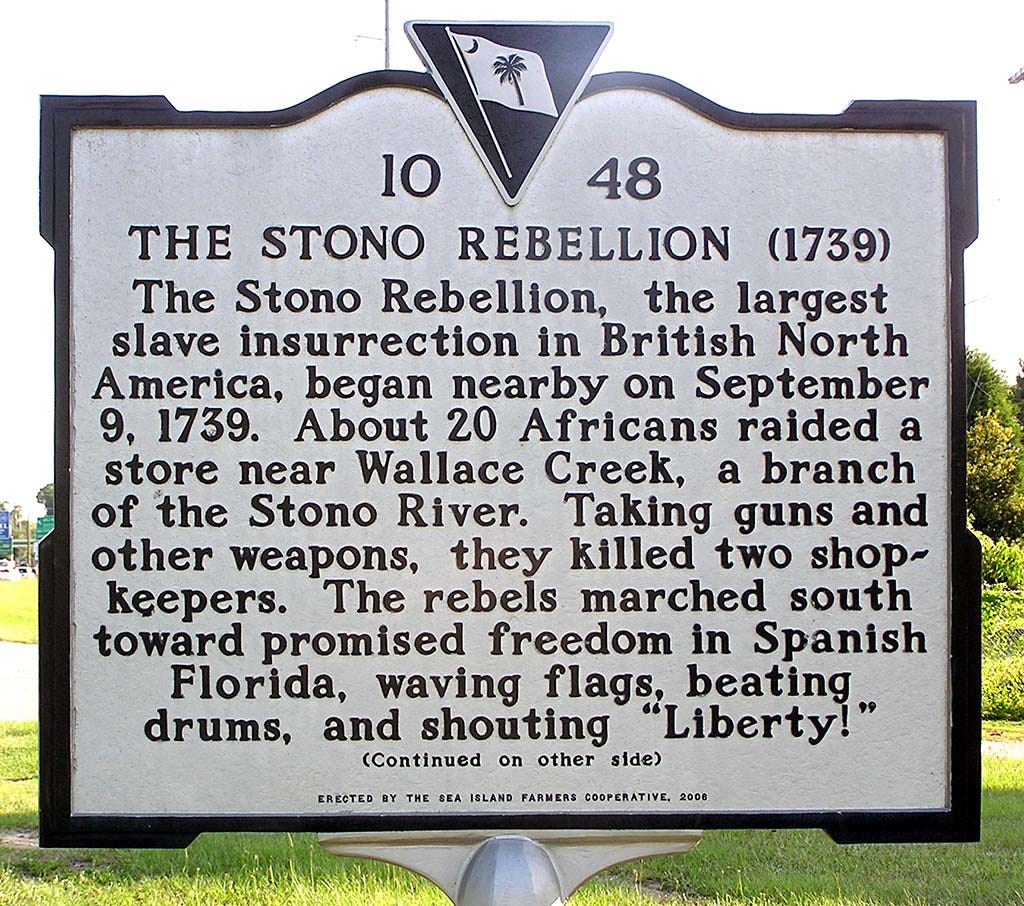The Stono Rebellion (1739) – The First Major Slave Revolt in the American Colonies
Black History Through the Lens of Liberation
How Enslaved Africans Fought for Their Freedom Before the United States Even Existed
Before the American Revolution, before the Civil War, before any formal abolition movement took shape, enslaved Africans in the British colony of South Carolina rose up against their oppressors in an act of bold defiance. The Stono Rebellion of 1739 was one of the largest and earliest recorded uprisings of enslaved people in what would become the United States.
This rebellion, led by Jemmy, an enslaved man from Angola, was a direct challenge to the brutal system of slavery and a testament to the spirit of resistance that has always defined Black history. The Stono Rebellion wasn't just an act of desperation—it was a carefully planned revolt inspired by African war traditions, Catholic faith, and the hope of reaching Spanish Florida, where enslaved people were promised freedom.
What Sparked the Stono Rebellion?
The conditions that led to the rebellion were rooted in brutality and hope:
Harsh Slave Codes: Enslaved Africans in South Carolina were subjected to extreme physical violence, forced labor, and laws that stripped them of autonomy.
The Promise of Freedom in Spanish Florida: The Spanish, who were at war with Britain, offered freedom to any enslaved person who could escape to Florida and convert to Catholicism.
The Influence of African Military Traditions: Many of the enslaved men in South Carolina had been warriors in Africa before their capture, bringing with them strategies of organized resistance.
On September 9, 1739, a group of about 20 enslaved Africans, led by Jemmy, gathered near the Stono River, about 20 miles from Charleston. Armed with weapons they had taken from a storehouse, they launched their rebellion with one goal: freedom.
The Revolt: A March for Liberation
The rebels moved southward toward Florida, waving banners, beating drums, and chanting for freedom. Their numbers quickly grew as other enslaved people joined the uprising.
They raided plantations, killing about 25 white enslavers and burning homes along the way.
They spared some whites—historians believe this may have been a strategic choice, showing that their goal was not blind violence but freedom.
The rebellion continued for hours, with enslaved people fighting together as an organized force.
The Suppression and Aftermath
By the end of the day, the militia had mobilized, and a bloody battle ensued. Some rebels escaped, but many were killed or captured. Those who were caught were brutally executed, their heads placed on spikes along the roads as a warning to others.
Although the rebellion was ultimately crushed, it terrified white enslavers, leading to even harsher laws known as the Negro Act of 1740, which:
Restricted the movement of enslaved people
Banned them from assembling in groups
Prohibited enslaved people from learning to read or write
Increased penalties for rebellion
The response was brutal, but the message of the rebellion was clear: enslaved Africans were not passive victims. They resisted at every turn, and continued to do so against all odds.
Why the Stono Rebellion Still Matters Today
The Stono Rebellion challenges whitewashed narratives that paint slavery as a system where the enslaved were powerless. It forces us to acknowledge that from the very beginning of colonial America, Black people were actively fighting for their liberation.
This rebellion also highlights the global nature of Black resistance, showing how:
African war traditions influenced resistance in the Americas
Black people used existing political conflicts (Spain vs. Britain) to seek freedom
The fear of Black rebellion shaped laws that controlled Black life for centuries
The Negro Act of 1740 wasn’t just about punishment—it was a blueprint for future forms of systemic oppression. The tactics used to suppress the Stono rebels would be echoed in later Black Codes, Jim Crow laws, mass incarceration, and modern-day policing.
Reflection Question: How do laws today still attempt to restrict and control Black autonomy?
Lessons from the Stono Rebellion for Today
The spirit of Stono lives on in every movement that fights against oppression. From the Civil Rights Movement to today’s struggles for Black liberation, the core lesson remains: Liberation must be demanded and defended.
Black people have always fought for their own freedom—it was never simply “granted.”
White violence has always been used as a response to Black resistance—and new laws often follow in its wake.
We must honor the legacy of Black revolutionaries by continuing to fight against modern-day injustices.
Reflection: What does it mean to fight for liberation today? How do you see the legacy of the Stono rebels in modern resistance movements?
Resources for Further Learning
📖 Book: Africans in Colonial Louisiana: The Development of Afro-Creole Culture in the Eighteenth Century by Gwendolyn Midlo Hall – Explores how African traditions shaped resistance.
🎬 Film: The African Americans: Many Rivers to Cross by Henry Louis Gates Jr. – Covers early resistance to slavery, including the Stono Rebellion.
🏛 Museum Exhibit: International African American Museum (IAAM) Charleston, SC – Explores the legacy of slavery and resistance in the Lowcountry.
A 28-Day Journey Through Black Resistance and Liberation
The Stono Rebellion is just one of many stories of Black defiance and resilience included in my 28-Day Journey Through Black Resistance and Liberation. This living document is continuously updated with lessons, resources, and deeper dives into the history they don’t teach in school.
📖 Join the journey today:
🔗 Get the guide here.
Our ancestors didn’t wait for freedom—they fought for it. And so must we.
In solidarity and liberation,
Desireé B. Stephens CPS-P
Educator | Counselor | Community Builder
Founder, Make Shi(f)t Happen





